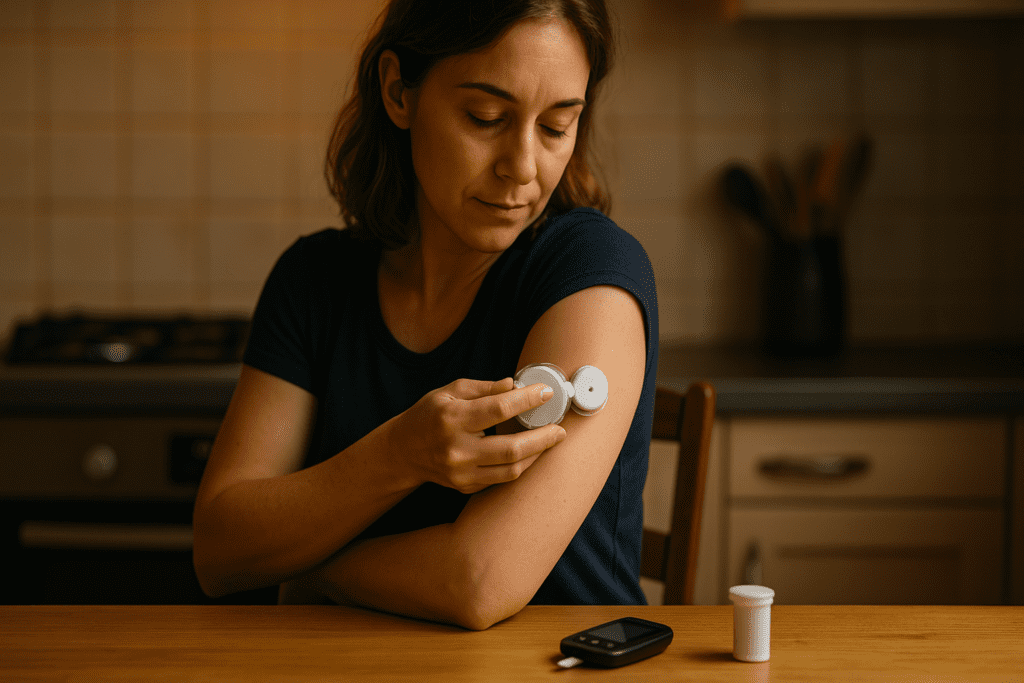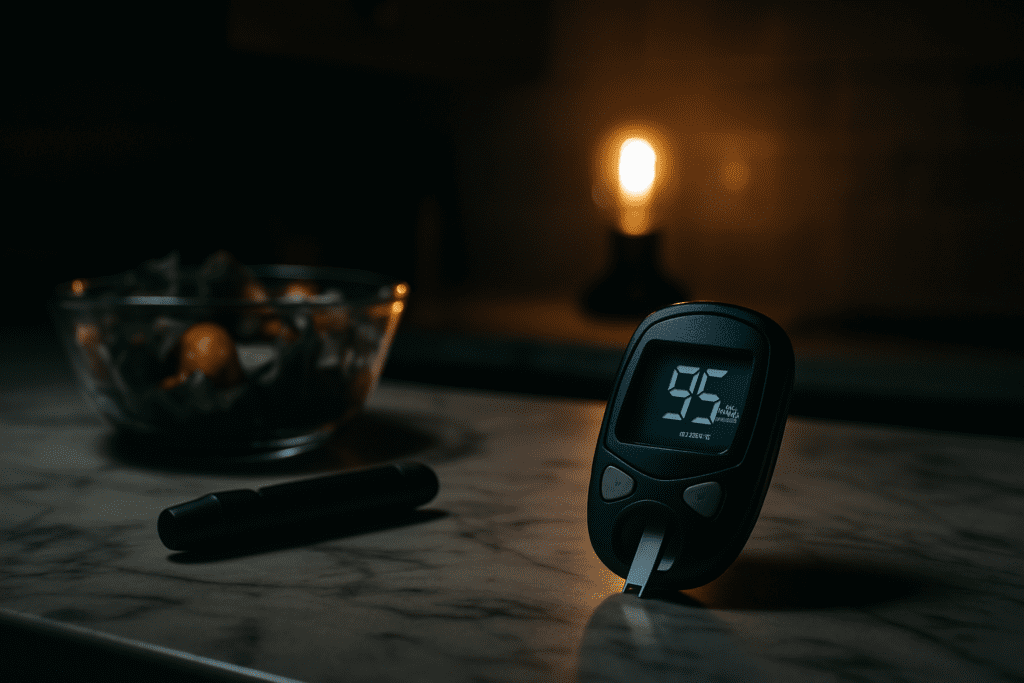Understanding the Diabetes Epidemic: A Global and Personal Health Crisis
Diabetes has evolved from a once-rare condition to a global health emergency, affecting over 537 million adults worldwide as of the latest estimates. As this number continues to rise, so too does the need for innovative approaches to treatment and prevention. While type 1 diabetes remains an autoimmune disorder requiring lifelong insulin, type 2 diabetes, which comprises over 90% of all diabetes cases, is largely lifestyle-related and potentially modifiable. However, managing either form of diabetes remains a complex and deeply personal journey. The latest research is shedding new light on how to deal with diabetes not just through medications, but by understanding its root mechanisms, intervening earlier, and tailoring lifestyle interventions to individual biology.
You may also like: Breakthroughs in Current Diabetes Research: What the Latest Studies Reveal About Treatment and Prevention
Historically, diabetes management focused heavily on blood sugar control using insulin or oral medications. While these remain foundational, scientists are now identifying metabolic, genetic, microbiome, and inflammatory factors that contribute to disease progression. These discoveries are revolutionizing the way we view diabetes—not as a single condition with a one-size-fits-all solution, but as a spectrum of disorders requiring precision-based care. For those wondering how can I manage diabetes more effectively or seeking new ways to improve their outcomes, these insights are both timely and transformative.
Beyond Glucose: Understanding the Metabolic Roots of Diabetes
At the core of diabetes lies an intricate web of metabolic dysfunction. Researchers now recognize that insulin resistance, a condition where cells become less responsive to insulin, begins years before diabetes is officially diagnosed. The liver, muscle, and adipose tissues are all affected, disrupting normal glucose and lipid regulation. What’s more, pancreatic beta-cell dysfunction—the gradual loss of insulin-producing cells—occurs quietly and insidiously in the background, often escaping early detection.
Emerging research emphasizes the role of chronic low-grade inflammation and oxidative stress in this metabolic chaos. Inflammatory cytokines, produced by visceral fat and immune cells, interfere with insulin signaling pathways. Additionally, mitochondrial dysfunction and altered lipid metabolism are being recognized as early markers of metabolic decline. These findings shift the conversation from merely treating hyperglycemia to understanding its root biological causes. For patients asking how can I manage diabetes with a more informed perspective, the answer may lie in targeting these upstream disturbances.

Personalized Nutrition: Tailoring Diet to the Individual’s Biology
One of the most significant advancements in diabetes science is the move toward personalized nutrition. Traditional dietary advice for managing diabetes—such as reducing sugar, limiting processed foods, and controlling carbohydrate intake—remains essential. However, studies now show that people respond very differently to the same foods based on their microbiome, genetics, sleep patterns, and even time of day.
A groundbreaking study from the Weizmann Institute revealed that two individuals consuming identical meals could have completely opposite blood sugar responses. This has led to the development of algorithm-based dietary plans using continuous glucose monitors (CGMs), machine learning, and microbiome analysis. These tools help tailor meal timing, composition, and quantity to each person’s unique metabolism. For those wondering how to deal with diabetes beyond generic dietary advice, this shift toward data-driven eating plans offers new hope and empowerment.
Moreover, emerging dietary approaches such as time-restricted eating, low-glycemic-load diets, and plant-forward eating are showing promise in lowering HbA1c levels and improving insulin sensitivity. While there’s no universal “diabetes diet,” the emphasis is increasingly on sustainability, personalization, and minimizing glycemic variability—a crucial predictor of long-term complications.
The Microbiome Connection: Gut Health and Blood Sugar Control
The trillions of microorganisms residing in the human gut are no longer viewed as passive passengers. Instead, they are active participants in metabolic regulation. Dysbiosis—a disruption in the balance of beneficial versus harmful gut bacteria—has been strongly linked to insulin resistance, systemic inflammation, and altered glucose tolerance.
Recent clinical trials have shown that manipulating the gut microbiota through prebiotics, probiotics, and dietary fiber can improve glucose metabolism. Specific bacterial strains such as Akkermansia muciniphila and Faecalibacterium prausnitzii are associated with better metabolic profiles and lower HbA1c levels. Additionally, short-chain fatty acids (SCFAs), produced by microbial fermentation of dietary fiber, play a key role in regulating appetite, inflammation, and glucose uptake.
Understanding this gut-pancreas axis opens up new frontiers for those asking how can I manage diabetes beyond conventional interventions. Therapies aimed at restoring microbial balance—whether through dietary diversity, fermented foods, or targeted supplementation—may become integral to future diabetes care. The gut, once overlooked, is now at the center of metabolic research.
Advancements in Continuous Glucose Monitoring and Real-Time Feedback
Technology is dramatically reshaping the landscape of diabetes management. Continuous glucose monitors (CGMs), once reserved for those with type 1 diabetes, are now widely used by individuals with type 2 diabetes and even prediabetes. These devices provide real-time insights into how meals, sleep, stress, and activity affect blood sugar levels.
Studies have shown that CGM use improves glycemic control, reduces hypoglycemia risk, and promotes behavioral changes through immediate feedback. Users can identify personal “trigger foods,” optimize physical activity timing, and reduce glucose spikes after meals. This level of self-awareness is empowering for individuals striving to learn how to deal with diabetes in a practical and personalized way.
The integration of CGMs with smartphones, insulin pumps, and artificial intelligence-driven platforms is creating closed-loop systems, often referred to as “artificial pancreas” technology. These systems automatically adjust insulin delivery based on sensor data, reducing the cognitive and emotional burden of daily diabetes decisions. For both type 1 and type 2 patients, these tools are closing the gap between current care and ideal metabolic control.

Exercise as Medicine: Rethinking Physical Activity for Glucose Regulation
Exercise has long been recommended as a pillar of diabetes management, but newer insights are refining how we prescribe movement. It’s not just about burning calories; physical activity enhances insulin sensitivity, reduces visceral fat, and improves mitochondrial efficiency—all critical factors in diabetes prevention and treatment.
Emerging evidence supports the benefits of high-intensity interval training (HIIT), resistance training, and post-meal walks for optimizing glycemic control. For example, a 2023 meta-analysis found that short bouts of walking after meals significantly blunted postprandial glucose excursions. Meanwhile, resistance training has been shown to preserve lean muscle mass and improve fasting insulin levels even in older adults with type 2 diabetes.
The key takeaway is that movement need not be extreme to be effective. Rather, consistency, timing, and variety are essential. For individuals exploring how to deal with diabetes through lifestyle, incorporating short, strategic sessions of movement throughout the day may yield outsized benefits. The message is clear: exercise isn’t optional—it’s a core therapy.
The Role of Sleep, Stress, and Circadian Rhythms in Blood Sugar Control
Modern research has uncovered a powerful link between circadian biology and glucose metabolism. Disruptions in sleep patterns, high stress levels, and shift work have all been associated with increased diabetes risk and poor glycemic control. The body’s internal clock governs insulin secretion, cortisol levels, and even glucose uptake in tissues.
Sleep deprivation, for instance, decreases insulin sensitivity and increases evening glucose levels. Meanwhile, chronic psychological stress raises cortisol and inflammatory markers, further impairing insulin action. Understanding these interactions has given rise to chronotherapy—strategies that align medication, meals, and activity with the body’s natural rhythms to optimize metabolic outcomes.
For those asking how can I manage diabetes in a more holistic and sustainable way, prioritizing sleep hygiene, practicing mindfulness, and maintaining regular sleep-wake cycles are emerging as essential components of care. Cognitive-behavioral therapy for insomnia (CBT-I) and stress-reduction programs such as mindfulness-based stress reduction (MBSR) have shown measurable improvements in HbA1c and quality of life.
Pharmacologic Innovations: Beyond Metformin and Insulin
While lifestyle interventions are foundational, pharmacologic advances continue to expand the diabetes toolkit. New classes of medications such as SGLT2 inhibitors and GLP-1 receptor agonists are not only effective at lowering blood glucose but also provide cardiovascular and renal protection—two major concerns for people with diabetes.
GLP-1 agonists, for instance, mimic a natural hormone that increases insulin secretion, delays gastric emptying, and promotes satiety. Drugs like semaglutide have shown substantial reductions in body weight and cardiovascular events in clinical trials. SGLT2 inhibitors, which promote glucose excretion via the kidneys, also lower blood pressure and reduce the risk of heart failure hospitalization.
These medications represent a shift from glucose-centric care to organ-protective therapy. For individuals wondering how to deal with diabetes using the most advanced options available, consulting with endocrinologists about these newer agents may be key. Importantly, these drugs are being increasingly used earlier in the disease course, often in combination with lifestyle changes.
Gene-Based Risk Profiling and Precision Diabetes Prevention
A new frontier in diabetes science is the use of genetic risk profiling and precision medicine to identify those at highest risk—and to intervene before disease develops. Polygenic risk scores, which calculate diabetes susceptibility based on multiple genetic variants, are being integrated with lifestyle data to create personalized prevention plans.
For example, individuals with a high genetic risk but low lifestyle risk may benefit from periodic monitoring, while those with moderate genetic risk but poor dietary habits may require intensive interventions. Studies such as the DIRECT trial are exploring how genotype-based diets can improve insulin resistance and fat distribution.
Although still in early stages, this approach offers a glimpse into the future of diabetes care—one where prevention is proactive, data-driven, and tailored to individual biology. For those seeking guidance on how can I manage diabetes before it even manifests, genetic and metabolic screening may become a critical step.
Community and Digital Health Interventions: Empowering Self-Management
Diabetes is not just a biochemical disorder—it’s a social and behavioral one. Digital health tools, peer support programs, and culturally tailored interventions are emerging as vital complements to clinical care. Mobile apps, virtual coaching, and telehealth platforms have expanded access to education, goal-setting, and accountability.
Research supports the effectiveness of digital diabetes prevention programs (DPPs) in reducing weight, HbA1c, and diabetes incidence among high-risk individuals. These programs offer structure, community, and evidence-based curricula through accessible technology. Meanwhile, culturally sensitive interventions tailored to ethnic and socioeconomic backgrounds improve adherence and engagement.
Ultimately, how to deal with diabetes goes beyond biology. It involves addressing barriers to care, health literacy, and emotional well-being. Empowering individuals to become active participants in their health journey is central to the next era of diabetes management.
Looking Ahead: What Emerging Science Means for Everyday Diabetes Care
As scientific understanding of diabetes deepens, so does the potential to reshape care. From microbiome modulation and gene-based interventions to AI-driven glucose monitoring and lifestyle therapies rooted in circadian biology, the future of diabetes management is dynamic, interdisciplinary, and deeply personal.
For anyone asking how can I manage diabetes more effectively, the answer lies in staying informed, engaging with emerging tools, and working collaboratively with healthcare providers to create personalized, sustainable strategies. While medications remain essential, the emphasis is shifting toward root-cause resolution, preventive care, and whole-person support. It’s an approach grounded not just in science, but in empowerment.

Frequently Asked Questions: Emerging Strategies on How to Deal with Diabetes
1. Can mindfulness practices truly help in managing blood sugar levels?
Yes, mindfulness practices such as meditation, deep breathing, and mindful eating have shown measurable effects on blood sugar regulation, especially in individuals with type 2 diabetes. These practices reduce sympathetic nervous system activation and cortisol release, which can otherwise impair insulin sensitivity. When asking how can I manage diabetes beyond diet and medication, stress regulation through mindfulness is an often underutilized but powerful option. Several studies suggest that consistent mindfulness training can reduce HbA1c levels over time and improve overall well-being. Integrating mental health tools into your diabetes care plan can enhance not only glucose control but also motivation, emotional resilience, and adherence to lifestyle changes.
2. What role does social connection play in diabetes management?
Strong social networks and support systems have a significant, though often underestimated, role in diabetes outcomes. Isolation and loneliness are linked to higher levels of inflammatory markers, increased insulin resistance, and poorer self-care behaviors. Exploring how to deal with diabetes successfully often involves engaging family, friends, or peer support groups to encourage accountability and emotional reinforcement. Individuals in diabetes communities—online or in-person—report higher satisfaction with their management plans and greater success in meeting health goals. If you’re wondering how can I manage diabetes more effectively, consider building a supportive social ecosystem that reinforces positive health behaviors.
3. How might wearable technology evolve to support better diabetes care?
The next wave of wearable technology is expected to move beyond continuous glucose monitors to include biosensors that track hydration status, ketone levels, heart rate variability, and even stress biomarkers. These tools will allow a more nuanced understanding of metabolic trends and give users real-time insights into how to deal with diabetes proactively. For example, integration with smartwatches and AI-driven apps could alert users before a significant glucose swing occurs. If you’re curious about how can I manage diabetes using technology, keep an eye on bio-integrated systems that adapt dynamically to your physiology. These emerging tools will likely become central to personalized, preventive diabetes care.
4. Are there specific types of fiber that are more effective in glucose control?
While all dietary fiber supports metabolic health to some extent, soluble fibers—such as those found in psyllium, oats, and legumes—are particularly effective at blunting post-meal glucose spikes. These fibers form viscous gels in the gut, slowing glucose absorption and enhancing satiety. If you’re exploring how to deal with diabetes using nutrition, incorporating 25–30 grams of fiber daily, especially from varied sources, can offer meaningful glycemic benefits. Moreover, certain prebiotic fibers selectively nourish beneficial gut microbes, further supporting blood sugar stability. For individuals asking how can I manage diabetes without drastic dietary overhauls, small, consistent increases in high-quality fiber can yield substantial results.
5. What’s the link between environmental toxins and insulin resistance?
Emerging research has identified a class of compounds known as “obesogens”—including certain pesticides, plastics (like BPA), and industrial pollutants—that may interfere with insulin signaling and fat metabolism. These endocrine-disrupting chemicals can accumulate in adipose tissue and disrupt hormonal regulation. For those trying to understand how to deal with diabetes holistically, reducing exposure to processed foods, using glass instead of plastic containers, and choosing organic produce when possible can reduce toxic burden. This approach complements traditional strategies by minimizing external contributors to metabolic dysfunction. Anyone seeking answers to how can I manage diabetes with a broader lens should consider evaluating environmental factors alongside biological ones.
6. How can shift workers better manage their risk of blood sugar dysregulation?
Shift work disrupts circadian rhythms, which are tightly linked to insulin sensitivity and glucose metabolism. To mitigate these effects, shift workers should establish regular meal times, limit caffeine and blue light exposure before sleep, and consider time-restricted eating that aligns with their natural hormonal cycles. These strategies are crucial for individuals wondering how can I manage diabetes while working non-traditional hours. Eating during the biological “day” and sleeping in a cool, dark environment can restore some of the body’s natural rhythm. Understanding how to deal with diabetes in the context of lifestyle realities like shift work requires adaptable, evidence-based strategies that account for real-world constraints.
7. Are there early warning signs of metabolic imbalance before prediabetes sets in?
Yes, metabolic dysfunction often begins years before formal prediabetes or diabetes diagnoses. Signs may include increased fatigue after meals, difficulty losing weight, frequent sugar cravings, and mild but persistent brain fog. If you’re reflecting on how to deal with diabetes before it progresses, tuning in to these subtle cues can be key to early intervention. Incorporating routine fasting glucose tests, CGMs, or even periodic oral glucose tolerance tests (OGTT) can help catch dysfunction early. When exploring how can I manage diabetes preemptively, tracking these early markers allows for timely lifestyle shifts that can delay or prevent diagnosis.
8. How does food timing impact glucose control in people with diabetes?
Meal timing, particularly the alignment of meals with the body’s circadian rhythms, plays a significant role in blood sugar regulation. Eating earlier in the day, when insulin sensitivity is higher, can lead to better postprandial glucose control. Late-night eating is associated with higher glucose variability and increased fat storage. Those exploring how to deal with diabetes more effectively may benefit from front-loading calories and carbohydrates earlier in the day. If you’re wondering how can I manage diabetes with a simple strategy that doesn’t require new medications or supplements, adjusting your meal schedule may be a powerful place to start.
9. What is the long-term impact of diabetes on brain health, and how can it be mitigated?
Diabetes is increasingly linked to cognitive decline, with elevated glucose levels, insulin resistance, and inflammation contributing to reduced brain volume and function over time. Strategies for preserving cognitive health include regular aerobic exercise, maintaining optimal blood pressure and lipid levels, and engaging in mentally stimulating activities. For those considering how to deal with diabetes in the long run, brain health should be a parallel focus alongside cardiovascular and renal protection. Nutrients such as omega-3s, B-vitamins, and polyphenols may also support neuronal function. If you’ve asked yourself how can I manage diabetes while safeguarding memory and cognition, prioritizing neuroprotective strategies is essential.
10. Can cultural or spiritual beliefs influence diabetes management outcomes?
Yes, cultural and spiritual perspectives often shape how individuals interpret health advice, adhere to treatment plans, and engage with lifestyle changes. Recognizing and honoring these beliefs can improve trust, communication, and compliance. In fact, culturally adapted diabetes education programs have shown superior results in blood sugar control compared to generic models. If you’re exploring how to deal with diabetes in a way that respects your personal or cultural background, seek providers who are sensitive to these dimensions. For those thinking how can I manage diabetes within a community or religious context, integrating spiritual values into the care plan can strengthen motivation and sustainability.
Conclusion: A New Era in Understanding How to Deal with Diabetes Effectively and Sustainably
The science of diabetes management is evolving rapidly, offering more hope, precision, and personalization than ever before. From the cellular biology of insulin resistance to the social dynamics of behavior change, we now understand that effective diabetes care requires a multidimensional approach. Tools such as continuous glucose monitors, microbiome-based interventions, personalized nutrition plans, and stress reduction techniques are reshaping how we think about daily disease control.
For those navigating the realities of this condition, the question of how can I manage diabetes no longer needs to be met with generalized answers or outdated advice. Instead, the emerging research encourages a tailored, science-based response that honors the complexity of the individual. By embracing both medical innovation and lifestyle transformation, we are entering a new era in which the answer to how to deal with diabetes is not just about control—it’s about thriving with informed, empowered care.
In this shifting landscape, patients, clinicians, and researchers alike are finding new paths forward—ones rooted in evidence, compassion, and cutting-edge discovery. The challenge is real, but the tools are expanding. And with every advancement, we move closer to a world where diabetes is not just manageable, but masterable.
blood sugar monitoring, type 2 diabetes prevention, insulin resistance reversal, glycemic control strategies, personalized nutrition for diabetes, continuous glucose monitoring, gut microbiome and metabolism, anti-inflammatory lifestyle, circadian rhythm and health, glucose metabolism optimization, prediabetes warning signs, holistic diabetes care, metabolic health improvement, digital health tools for diabetes, diabetes and cognitive decline, stress reduction for blood sugar, fiber-rich diet for glucose control, lifestyle medicine and diabetes, advanced diabetes technology, emerging diabetes research
Further Reading:
Applying emerging technologies to improve diabetes treatment
Trailblazing Discoveries: The Top 5 Diabetes Research Breakthroughs of 2023
The Science Behind a Plant-Based Diet and Diabetes Reversal
Disclaimer
The information contained in this article is provided for general informational purposes only and is not intended to serve as medical, legal, or professional advice. While MedNewsPedia strives to present accurate, up-to-date, and reliable content, no warranty or guarantee, expressed or implied, is made regarding the completeness, accuracy, or adequacy of the information provided. Readers are strongly advised to seek the guidance of a qualified healthcare provider or other relevant professionals before acting on any information contained in this article. MedNewsPedia, its authors, editors, and contributors expressly disclaim any liability for any damages, losses, or consequences arising directly or indirectly from the use, interpretation, or reliance on any information presented herein. The views and opinions expressed in this article are those of the author(s) and do not necessarily reflect the official policies or positions of MedNewsPedia.


